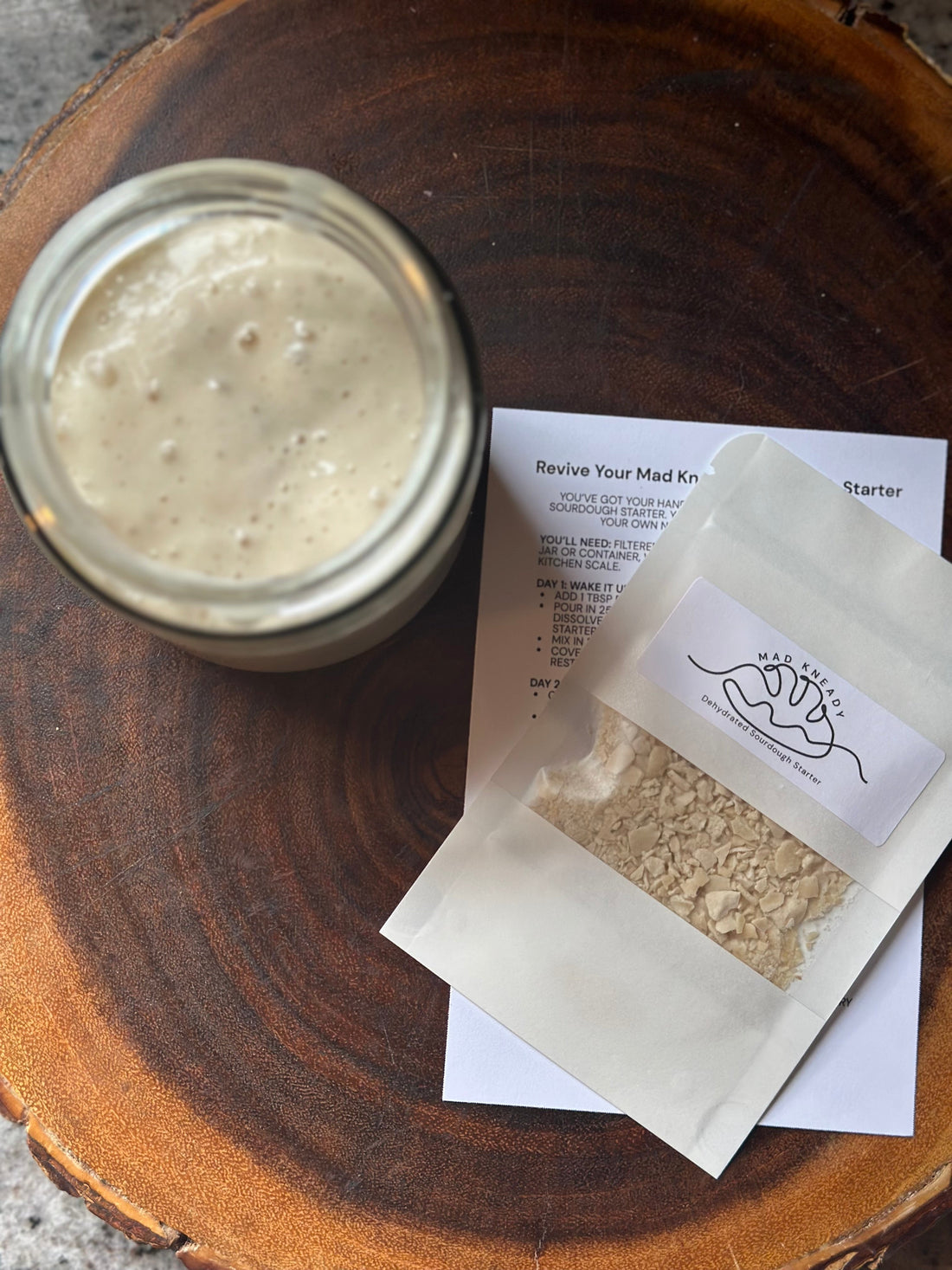
What Even Is Sourdough Discard (And Why You Shouldn’t Throw It Out)
Let me take you back to November 2024—when I first started my sourdough journey with not one, but two starters. Spoiler alert: I had zero patience. I wanted instant results, perfect loaves, and all the magic without giving the process the time it deserves. It wasn’t until I met Gladis (yes, I named my starter—highly recommend you name yours too) that things finally started to click.
Gladis is my girl now. She’s bubbly, reliable, and has helped me bake some of the most beautiful sourdough loaves. But here’s the thing most people don’t talk about when they first start baking sourdough: the discard. That leftover portion of starter you remove before a feeding? Yeah, it’s actually gold.
So, What Is Sourdough Discard?
Sourdough discard is unfed starter that’s removed before a feeding. But here’s an important note: it’s only really discard once your starter is active and thriving. In the early days of building a starter from scratch, that mixture isn’t technically “discard” yet—it’s still developing, full of wild yeast and bacteria figuring out their roles. It’s not something you want to bake with until it’s mature.
That’s part of what makes starting out so frustrating—it takes time to get to the point where your discard is actually useful.
But if you skip the wait and get your hands on my Mad Kneady Dehydrated Sourdough Starter (grab it here), you can fast-forward the process. Once it’s rehydrated and active, you’ll have strong, usable discard right away. That means you can start baking sourdough loaves and cookies in the same week—without the messy trial-and-error stage.
Why I Love Baking With Discard
Baking with discard has become part of my routine. Not just because it reduces waste (which is already a win), but because it gives your recipes that subtle tang and depth that only fermented dough can bring. It also makes your bakes easier to digest and helps avoid blood sugar spikes thanks to the slow-fermented flour.
Some of my go-to discard recipes?
- Sourdough chocolate chip cookies (soft, chewy, slightly tangy—yes please)
- Savory herb crackers (with olive oil + sea salt… so addicting)
- Pancakes and waffles (for lazy Sunday mornings with the kids)
- Banana muffins (because toddler-approved snacks are a must in my house)
Honestly, the options are endless. Once you start playing around with discard, you’ll never look at it as “waste” again.
A Few Quick Benefits of Using Discard:
- Reduces waste: You’re making the most of your starter.
- Adds flavor: That natural tang? Chef’s kiss.
- Easier digestion: Fermented flour is gentler on your gut.
- Boosts nutrition: Thanks to the breakdown of phytic acid, you’ll absorb more minerals from the grains.
If you’re just getting started on your sourdough journey—welcome. Be patient, name your starter (obviously), and when you hit that discard stage, don’t toss it. Bake something beautiful with it.
Gladis would approve.
